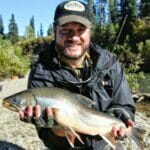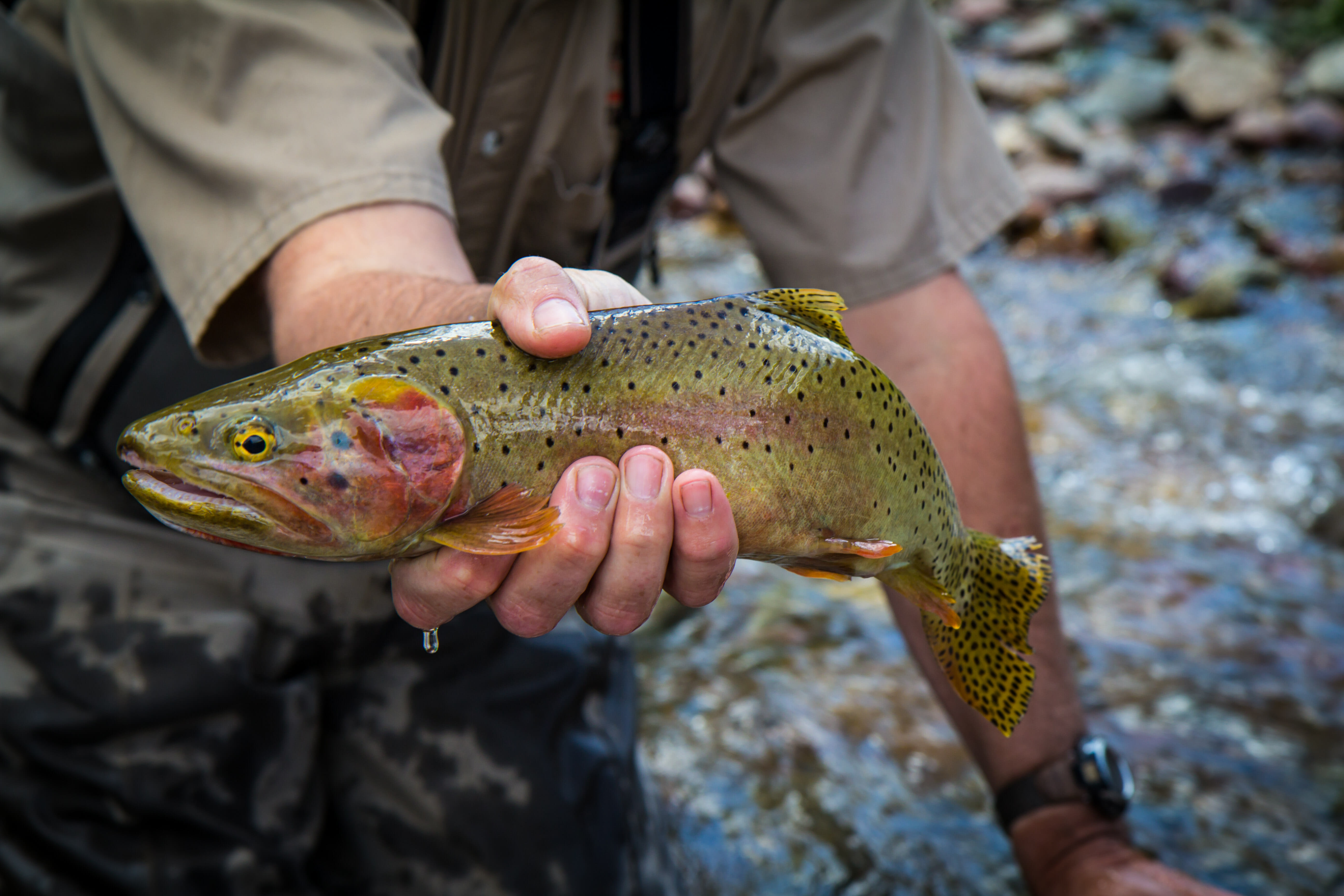A recently acquired water lease on Utah’s Weber River could help migratory native Bonneville cutthroat populations survive low water events. Trout Unlimited photo.
By Paul Burnett
Working within the constraints of Western Water Law to develop mechanisms for keeping water in streams is a slow and difficult process. After several years of groundwork from Trout Unlimited, in 2008 the Utah Legislature approved legislation allowing our organization to lease traditional consumptive water rights, such as irrigation, and keep them water in the stream to benefit native trout.
The beauty of this program is it allows water users to protect their water rights from nonuse for a term of 10 years by working with us and keeping the water in the stream. In doing so, it also encourages discussion and partnerships between fishery groups like TU and the largest water user group in the state, the agricultural community.
It took an additional 8 years, but TU has been granted our first in-stream flow lease in the State of Utah. This particular lease protects 1.49 cubic-feet-per-second of flow on the lower Weber River for a period of 10 years. Although this sounds small in terms of river flow (and it is), this lease represents a huge step forward for TU’s role in water in the State of Utah. This is exciting new ground for our work within Utah, and should become an important tool for protecting both water and our valuable fisheries.
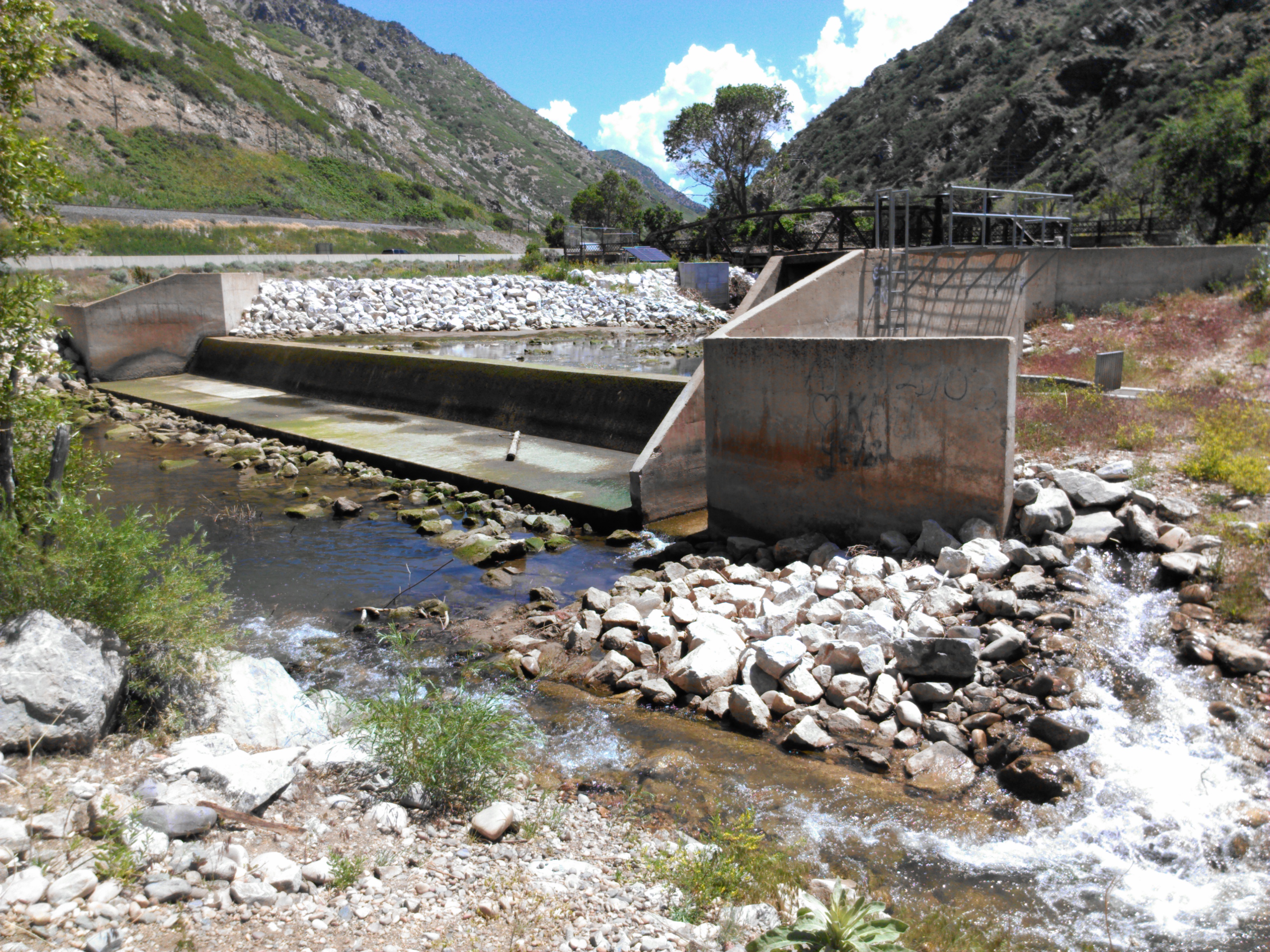
In June of 2015 the Weber River experienced an acute dewatering event. Before the recent instream flow lease was acquired Trout Unlimited had no means to ensure a suitable volume of water was being delivered to the lower reaches. Events like this may now be a thing of the past. Trout Unlimited photo.
Our in-stream flow lease didn’t happen overnight. It was the result of a long-term effort working with water users on the lower Weber River to protect and restore this incredibly valuable home river for thousands of anglers. TU initially developed a partnership with the South Weber Irrigation Company in 2010 after they contacted us for help reconstructing their irrigation diversion structure. TU helped raise money for the project, which re-established fish passage at their structure with a fishway and fish ladder, and constructed screens to protect downstream migrating fish from entrainment.
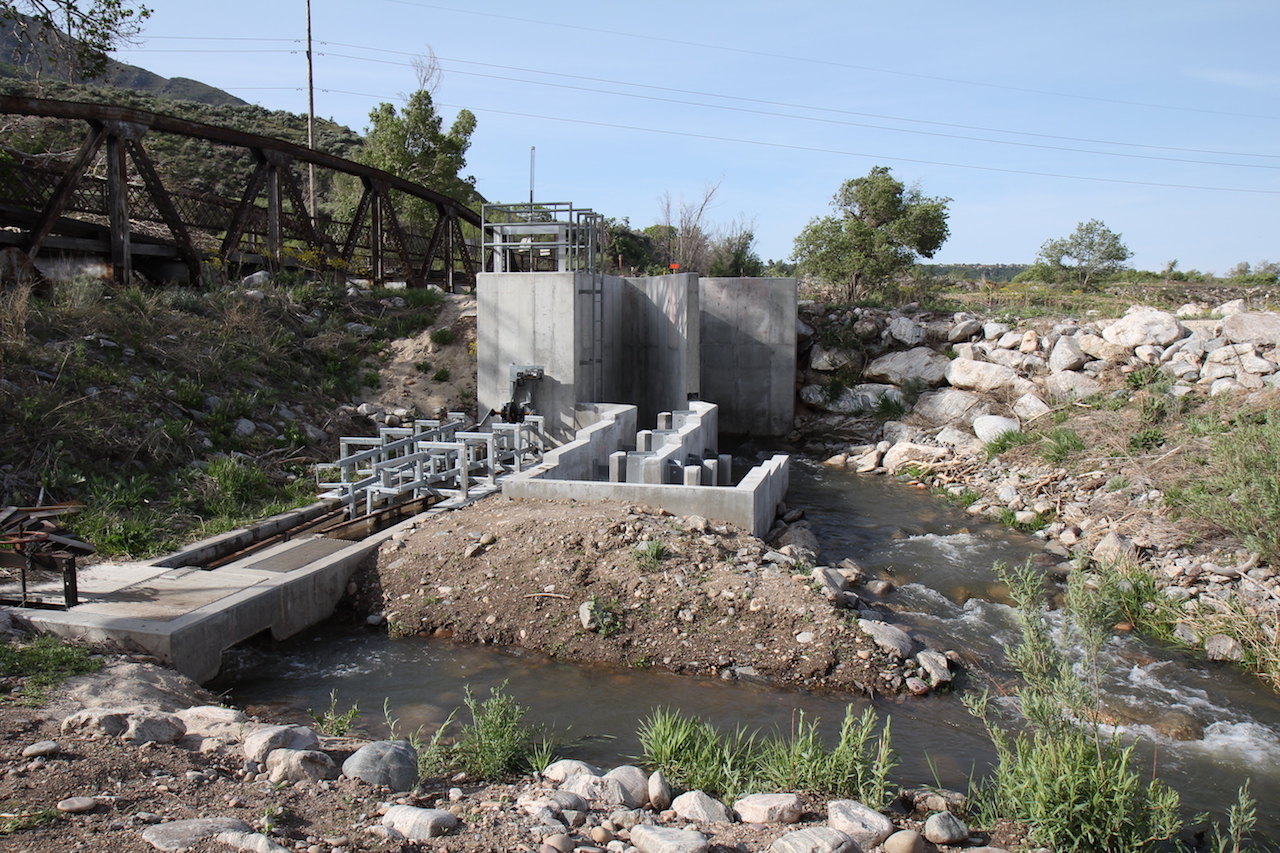
This photo shows the infrastructure improvements made to the Lower Weber River Diversion. This includes fish passage, screens and a brush system to clean screens. Trout Unlimited photo.
As we developed credibility with the water users, their board of directors approached us about acreage they were no longer irrigating and asked us to help preserve their water right by putting it to a beneficial use as a leased instream flow. Beginning in the 2017 water year, for 10 years, water in the lower Weber River will be protected. This also serves as a jumping-off point for more water transactions.
Increased water policy flexibility
Although still limited in scope, this lease represents a significant step forward in increasing flexibility in water law in the state of Utah. The Prior Appropriation Doctrine is the basis for water policy in a majority of the Western States and provides the foundational framework for water storage, distribution and use. Under the Prior Appropriation Doctrine, the right to use water is distributed based on seniority, it is also known as “first-in-line, first-in-right.”
In Utah, if you own a water right that was appropriated around 1850, you possess among the most senior water rights in a system. The date is powerful because if you own that senior water right, during times of drought, you can use your water when other water rights holders within a system have been curtailed. Water rights are also treated as a piece of real property, meaning it has value and can be passed down through generations or purchased.
The Prior Appropriation Doctrine has provided order and clarity for the traditional water users throughout the West, however these conventional rules have proven inflexible. Opportunities for collaborative conservation groups like TU have been limited despite that fact that providing additional flexibility – via non-regulatory and incentive-based water management tools – can work for both fisheries and agricultural producers. If the stream or river doesn’t have a senior water right allocated to instream flow, then it may dry up. This does happen with surprising frequency in Utah.
Many of our societal values have changed dramatically over time as the West has grown and developed. Undoubtedly, agriculture continues to be a significant and important economic driver in the West. However, traditional water management strategies within the western states are increasingly being adjusted or modified to better accommodate diverse emerging values, such as fishing and whitewater recreation, both industries with huge untapped economic potential, but few if any water rights.
Many of these changes are accomplished within the existing prior appropriation system, and reinforce the right to use water for historic uses while at the same time encouraging some producers to market water either permanently or temporarily to better protect fish and wildlife habitat.
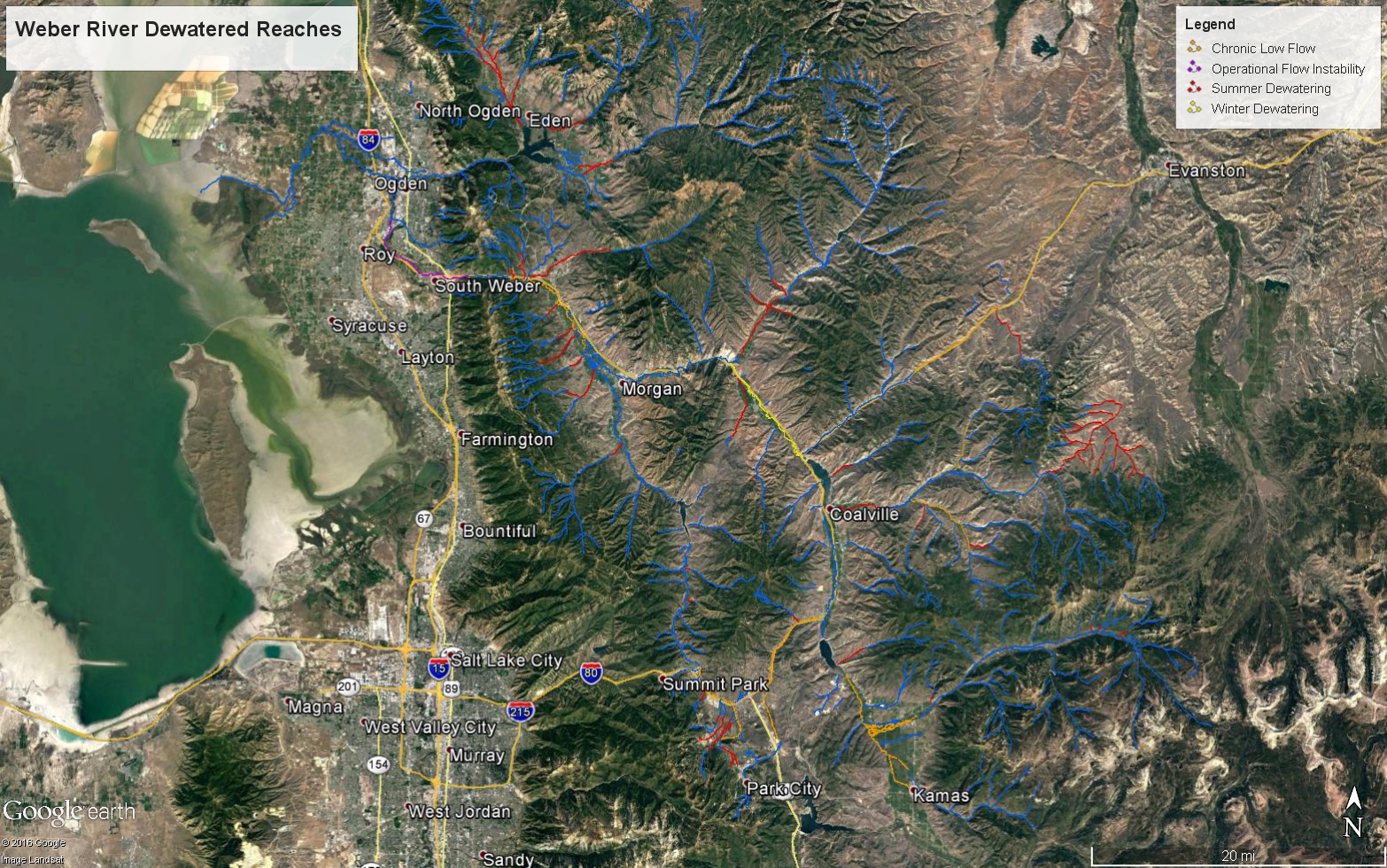
This map shows the results of a collaborative mapping effort in the Weber River identifying critically dewatered reaches. This map and several others across the state help guide our leasing efforts moving into the future. Trout Unlimited map.
The Utah water code, like many other western states, reflects this tug of war between protecting historic uses and encouraging innovation to restore streamflows. Instream flows (also called environmental flows or system water) have been appropriated as a beneficial use in recent years, but these instream flow appropriations have faced two significant challenges.
First, who can file for such instream flow rights is very restricted by statute. In Utah only the Utah Division of Wildlife Resources or Utah State Parks can permanently obtain an instream flow water right; Second, under the Prior Appropriation Doctrine, any newly-appropriated instream water rights also come with the corresponding junior appropriation dates, which are generally of limited value during times of scarcity. The ability for TU to lease water on a temporary basis in Utah provides an additional tool whereby conversations with long-time water users occur, water projects are designed and funded, and senior priority rights can be put to use for fishery resources.
Moving forward with partners
The ecological bottom line that we strive to accomplish is fish need water to survive. One hour of dewatering in a large river can have a population-level impact on fish populations, often taking years to recover. This puts vulnerable populations at risk of extinction and impacts angling opportunities. Our watersheds and rivers need water to be healthy. We now have an additional tool to keep water in-stream.
Our approach to working with water doesn’t stop with the completion of a single water transaction – it is part of a larger effort. In Utah, TU has analyzed and characterized the in-stream flow needs in several river basins, such as the Weber River, providing TU and our partners with the tools needed to make strategic efforts to securing instream flows through cooperative projects. We know where the dewatered streams are; the challenge will be to develop leases strategically and protect instream flows in high priority reaches. Some efforts may be straight-forward and others may take years because it often takes time to develop trust among members of the water user community and engineer and design a strategy that often involves complex infrastructure and multiple users.
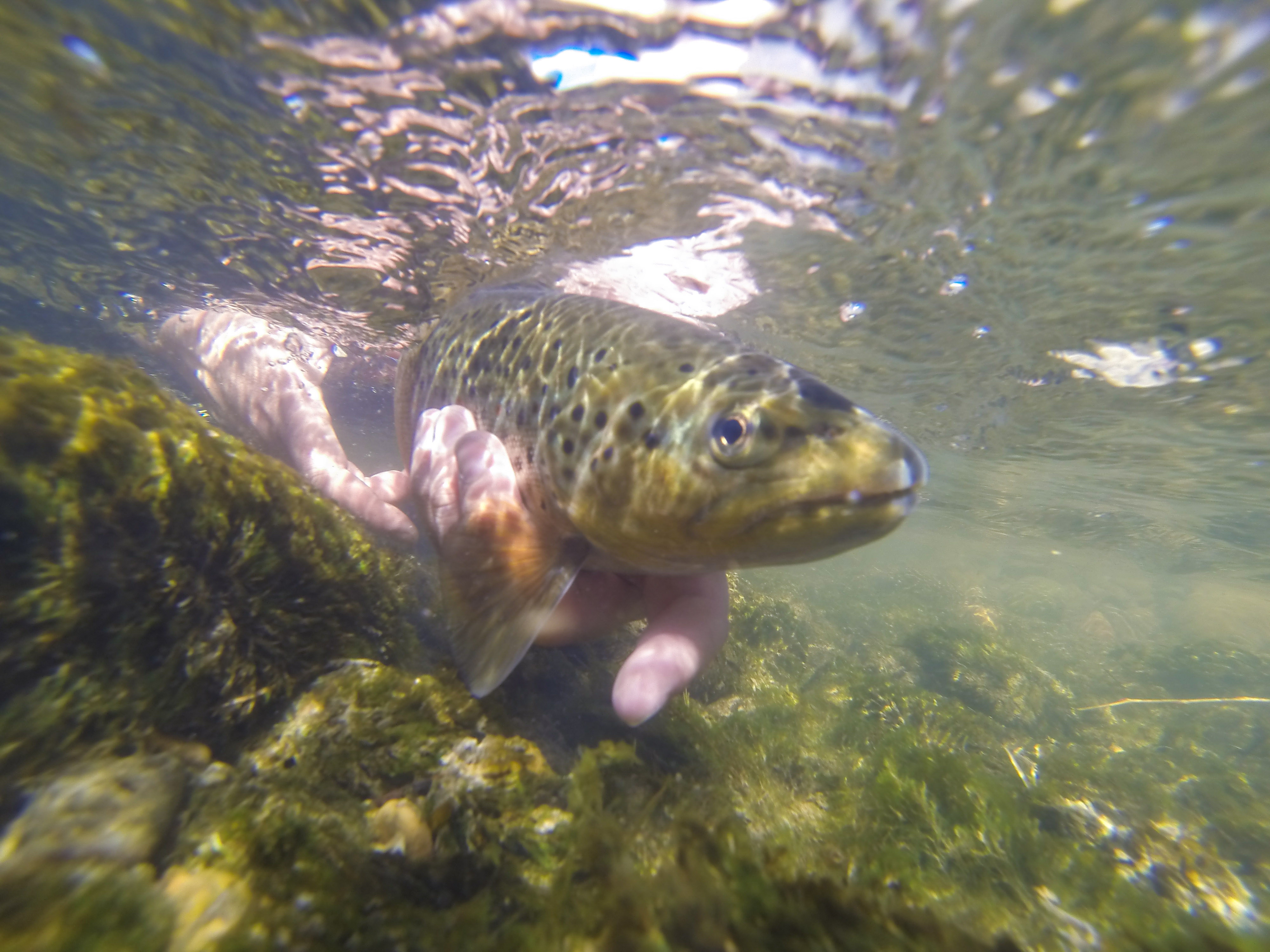
An angler on the Weber River releases a brown trout. Trout Unlimited photo.
TU continues to work hard to maintain credibility among the water community in Utah by working with our partners such as Water Conservancy Districts, individual producers, state and federal agencies, and others like The Nature Conservancy and the National Fish and Wildlife Foundation to develop compatible, market-based solutions to water management. By using water rights data, trout distribution maps, and leveraging partnerships, we plan to continue strategically moving toward increasing flows for trout while maintaining credibility with the agricultural community and other traditional water users.
Paul Burnett is the Utah project leader for Trout Unlimited. He can be reached at pburnett@tu.org


